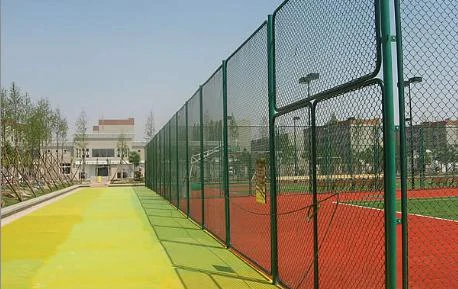 TEL:
+86-13102802206
TEL:
+86-13102802206
 Email:
fencenetting@china.com
Email:
fencenetting@china.com
 Language
Language
 TEL:
+86-13102802206
TEL:
+86-13102802206
 Email:
fencenetting@china.com
Email:
fencenetting@china.com
 Language
Language


The Green Gabion Wall A Sustainable Solution for Modern Landscaping
In recent years, environmental sustainability has become a focal point in architectural and landscape design. Among various eco-friendly options, the green gabion wall has emerged as a popular and practical choice for both residential and commercial properties. This innovative solution combines functionality, aesthetics, and sustainability, making it an ideal choice for those looking to enhance their outdoor spaces while being kind to the planet.
A gabion wall is constructed from wire mesh cages filled with natural stones, soil, or recycled materials. The term gabion is derived from the Italian word gabbione, meaning big cage. These structures are highly versatile and can be used for retaining walls, garden boundaries, and noise barriers. However, when incorporating plants into draped or planted gabion walls, they take on a new dimension that aligns beautifully with nature—this is where the concept of the green gabion wall comes into play.
The primary benefit of a green gabion wall is its ability to blend seamlessly into the surrounding environment
. With strategic planning, plants can be integrated directly into the wall structure, creating a living facade that changes with the seasons. This not only enhances the visual appeal of a property but also supports local biodiversity by providing habitat for various species, including birds and beneficial insects.
From a practical standpoint, green gabion walls are remarkably sturdy and long-lasting. The use of durable materials like galvanised steel mesh and local stones ensures that these structures can withstand harsh weather conditions and erosion. Furthermore, the porous nature of gabions allows for excellent drainage, reducing issues related to water pooling and soil erosion, making them ideal for coastal and hilly areas.
One of the standout features of the green gabion wall is its adaptability. Homeowners and landscape architects can customize the design to suit their specific needs and aesthetic preferences. Whether you want a rustic look with wildflowers and local plants or a modern feel with sleek succulents, the options are virtually limitless. Additionally, because gabion walls can be filled with various materials, they can also act as a means of recycling—repurposing stones, bricks, or concrete debris that might otherwise end up in a landfill.
Another significant advantage of the green gabion wall is its contribution to environmental sustainability. By promoting vegetation growth, these walls help improve air quality, reduce urban heat, and manage stormwater runoff, making them an excellent choice for eco-conscious homeowners. They can even contribute to LEED certification in commercial projects.
In conclusion, the green gabion wall stands out as a multifaceted solution in modern landscaping, marrying aesthetics with functionality and sustainability. As the world confronts the challenges of climate change and urbanization, embracing such innovative and eco-friendly design concepts not only creates beautiful spaces but also fosters a deeper connection with the environment. Whether for a garden, a property boundary, or an urban park, green gabion walls present a promising avenue for sustainable development that benefits both people and the planet.